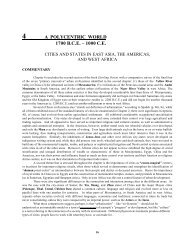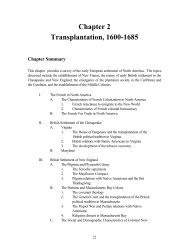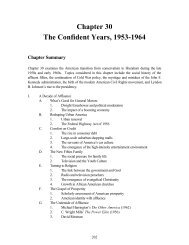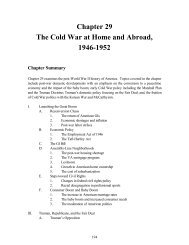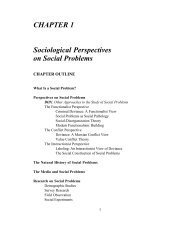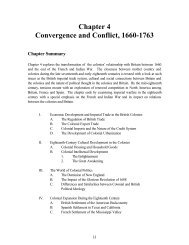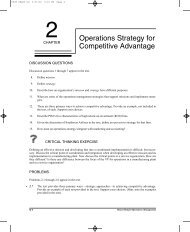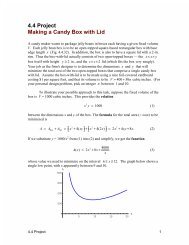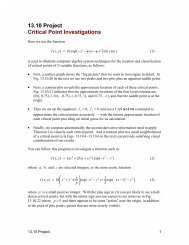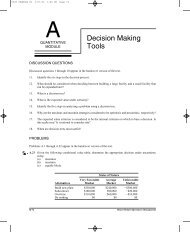Merchandising Operations and the Accounting Cycle - Pearson
Merchandising Operations and the Accounting Cycle - Pearson
Merchandising Operations and the Accounting Cycle - Pearson
Create successful ePaper yourself
Turn your PDF publications into a flip-book with our unique Google optimized e-Paper software.
288 Part One The Basic Structure of <strong>Accounting</strong><br />
Net sales, cost of goods sold, operating income, <strong>and</strong> net income are unaffected by<br />
<strong>the</strong> choice of inventory system. You can prove this by comparing Austin Sound’s financial<br />
statements given in Exhibit 5S-6 with <strong>the</strong> corresponding statements in<br />
Exhibit 5-7 on page 241. The only differences appear in <strong>the</strong> cost-of-goods-sold section<br />
of <strong>the</strong> income statement, <strong>and</strong> those differences are unimportant. In fact, virtually<br />
all companies report cost of goods sold in streamlined fashion, as shown for The<br />
Forzani Group Ltd. in Exhibit 5-1 <strong>and</strong> for Austin Sound in Exhibit 5-7.<br />
Learning Tip Here is an easy way to remember <strong>the</strong> closing process. First look at<br />
<strong>the</strong> work sheet. Then:<br />
1. Debit all income statement accounts with a credit balance. Credit Income<br />
Summary for <strong>the</strong> sum of all <strong>the</strong>se debits.<br />
2. Credit all income statement accounts with a debit balance. Debit Income Summary<br />
for <strong>the</strong> sum of all <strong>the</strong>se credits.<br />
3. Credit <strong>the</strong> inventory account for <strong>the</strong> amount of opening inventory <strong>and</strong> debit inventory<br />
for <strong>the</strong> amount of ending inventory obtained from <strong>the</strong> year-end physical<br />
count.<br />
4. Take <strong>the</strong> balance in <strong>the</strong> Income Summary account. If <strong>the</strong> account has a debit balance,<br />
<strong>the</strong>re is a net loss; credit Income Summary for that amount, <strong>and</strong> debit<br />
Retained Earnings. If Income Summary has a credit balance, <strong>the</strong>re is a net income<br />
for <strong>the</strong> period; debit Income Summary for that amount, <strong>and</strong> credit Retained<br />
Earnings.<br />
5. Look at <strong>the</strong> debit balance of Dividends in <strong>the</strong> balance-sheet column. Credit<br />
Dividends for its balance, <strong>and</strong> debit Retained Earnings for <strong>the</strong> same amount.



